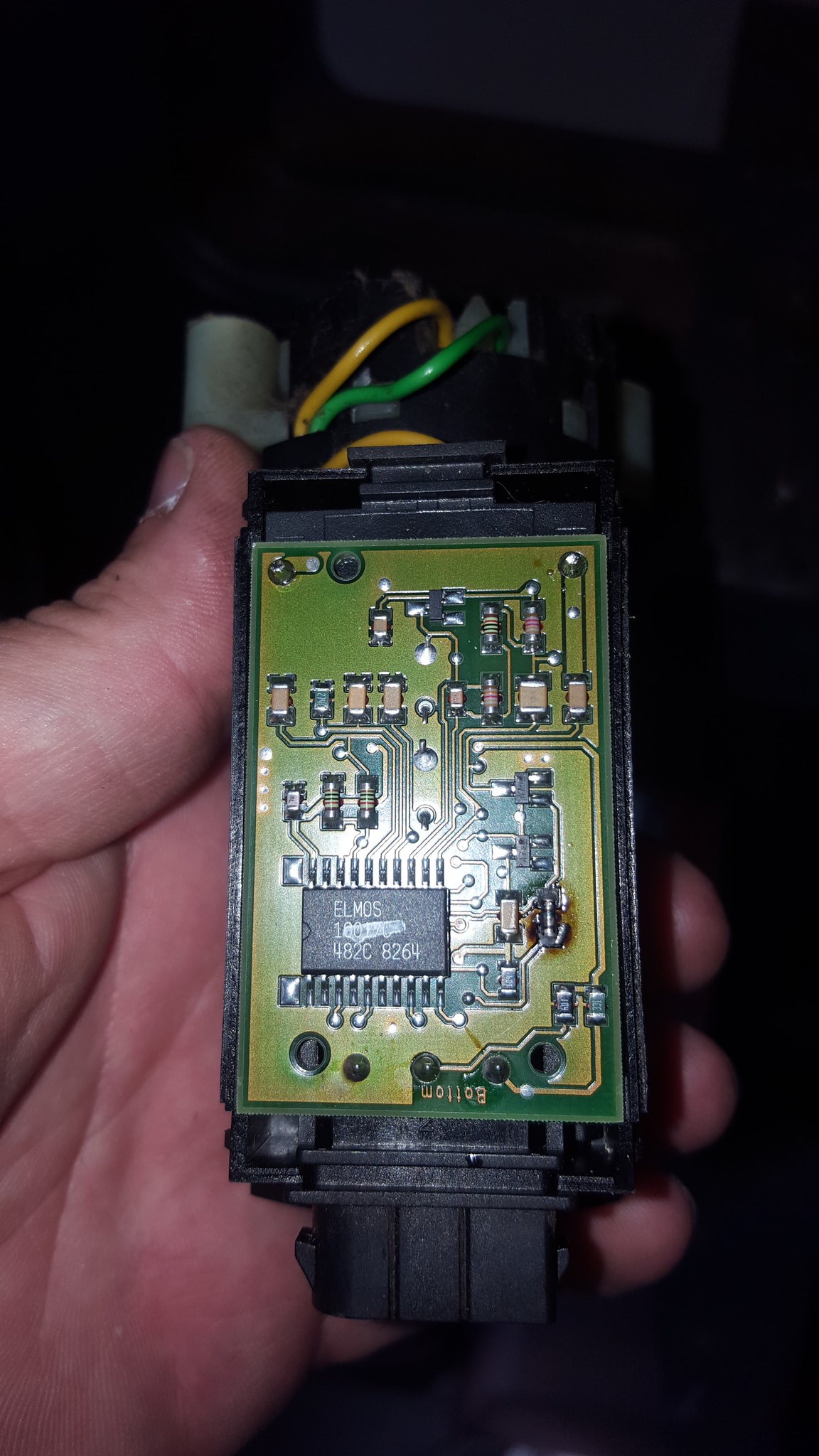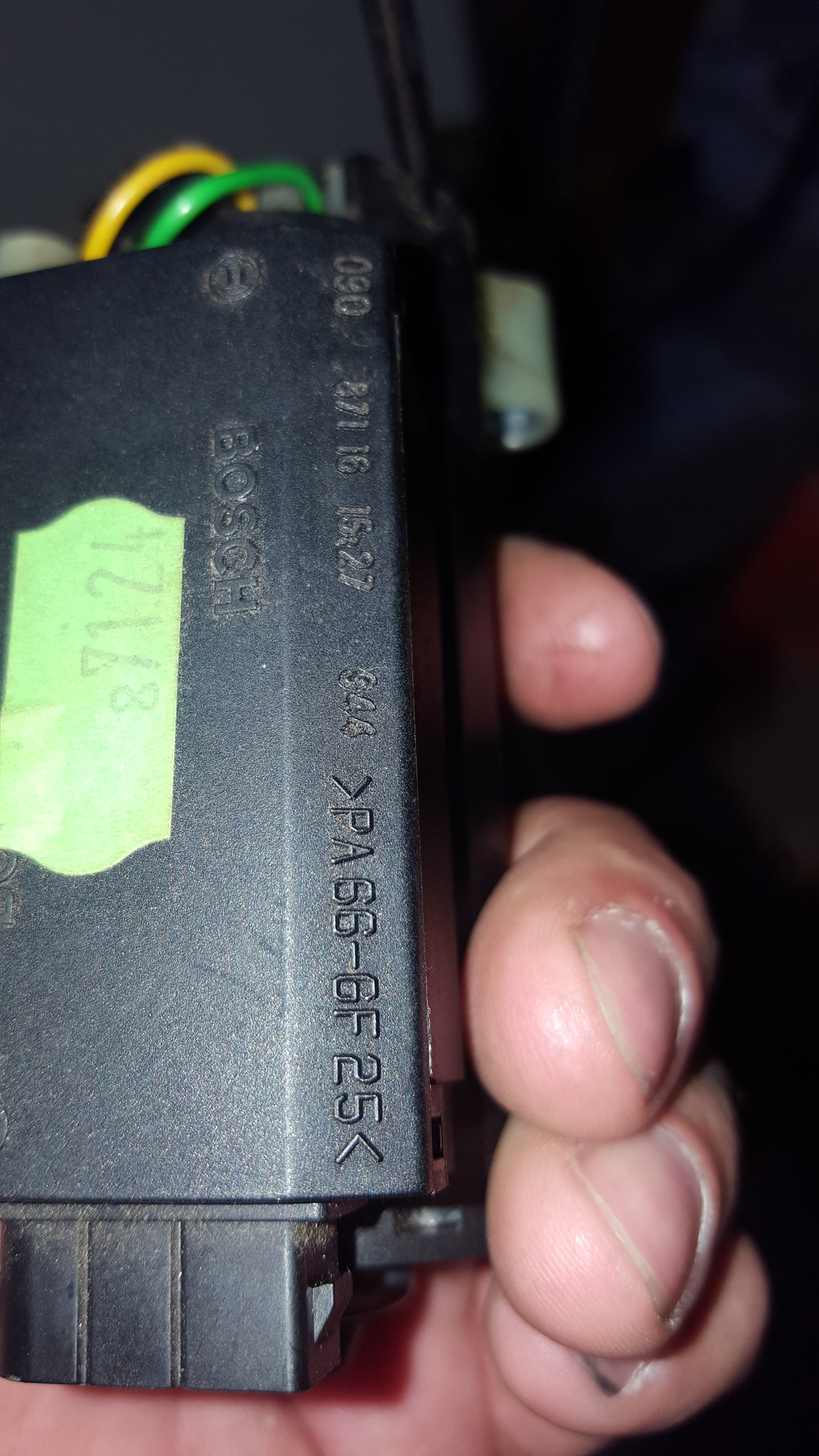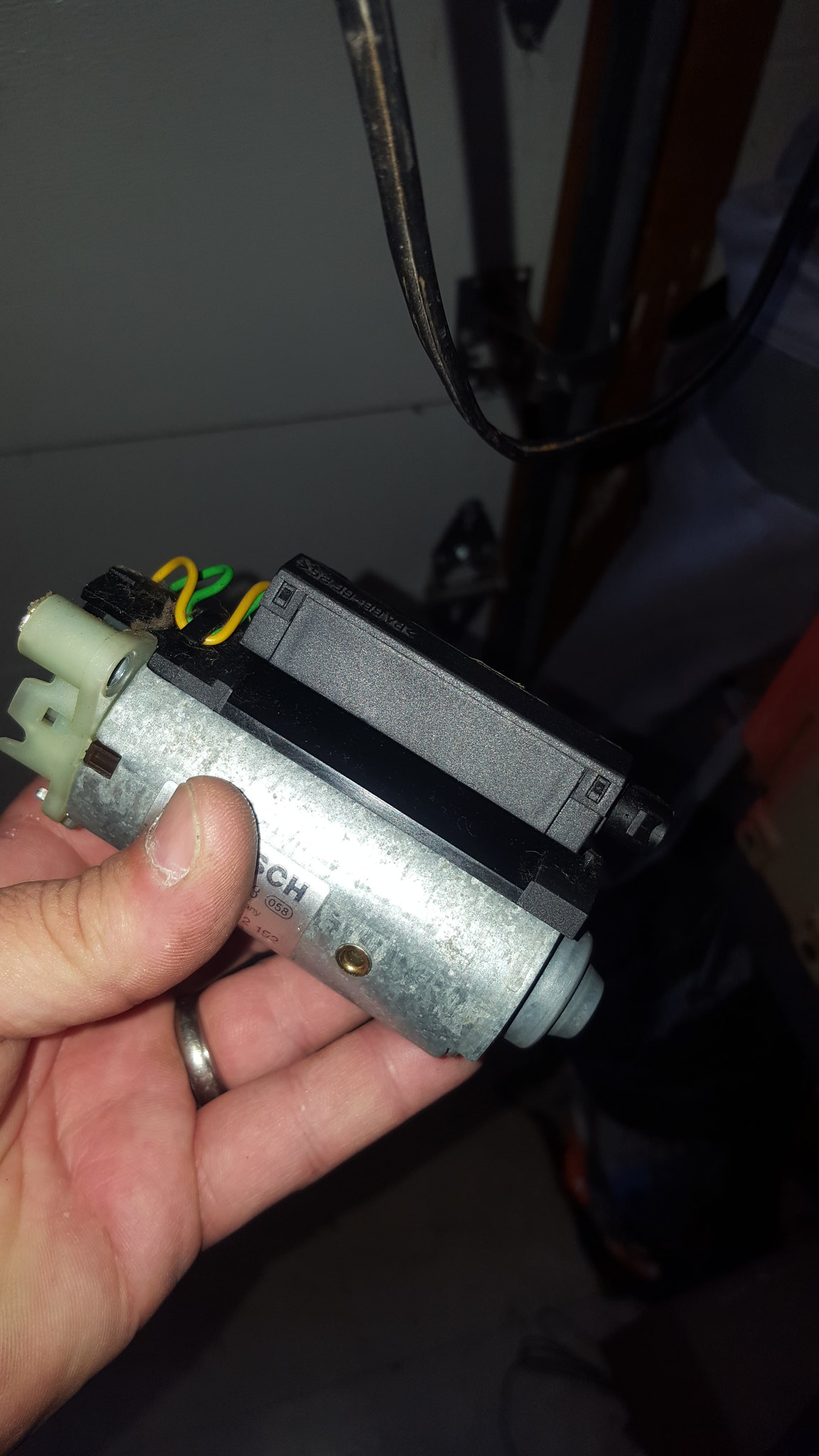circuit boards have never been a specialty of mine. as a matter of fact, other than re-flowing cold solder joints on neon instrument clusters, ive never messed with them. or had much luck with solder.
however, since a wise man once told me that you cant make something broken work LESS than it does now, im willing to try.
what we have here is a failed module on a seat motor in my 1999 528i. everything else in the system is good, however the motor wont operate via the seat controls due to this module of unidentified purpose.
in all honesty, i dont care what its purpose is supposed to be, as the only purpose its currently serving is to make my short, fat ass not be able to reach the pedals comfortably because the seat wont move (i have a workaround, but i want to FIX it, not hack it)
since im cheap, id like to try to fix the burned up piece instead of replacing the whole module. unless someone has a free one. or can find me a cheap, known good. regardless, id still ike to try to fix it.
attached are the pictures of motor, part numbers on module, and burned up piece. can yall help me identify what the component on the board is that fried, ad where to get a replacememnt? maybe even a how to on how to work with circuit boards?
 20180731_151055 by Michael Crawford, on Flickr
20180731_151055 by Michael Crawford, on Flickr
 20180731_153303 by Michael Crawford, on Flickr
20180731_153303 by Michael Crawford, on Flickr
 20180731_153310 by Michael Crawford, on Flickr
20180731_153310 by Michael Crawford, on Flickr



































